Arne Wiklund
Temperate Fish Detection and Classification: a Deep Learning based Approach
May 14, 2020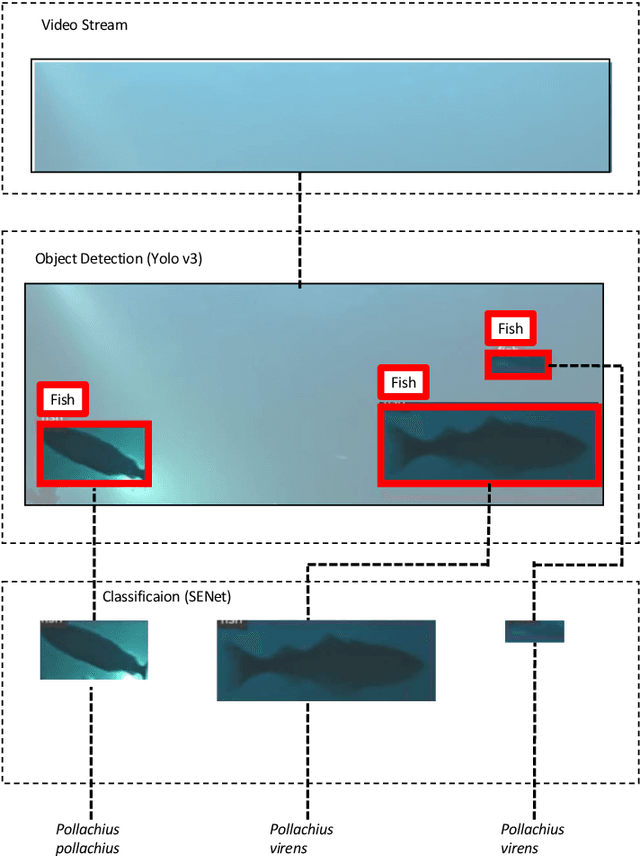
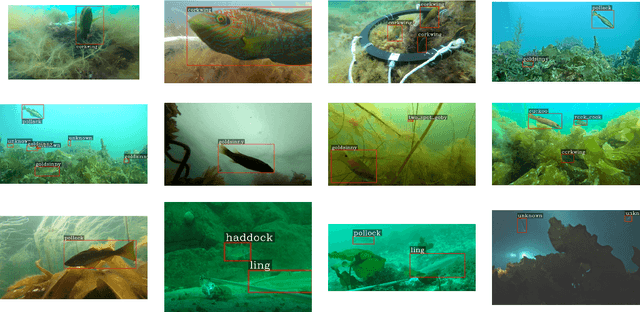
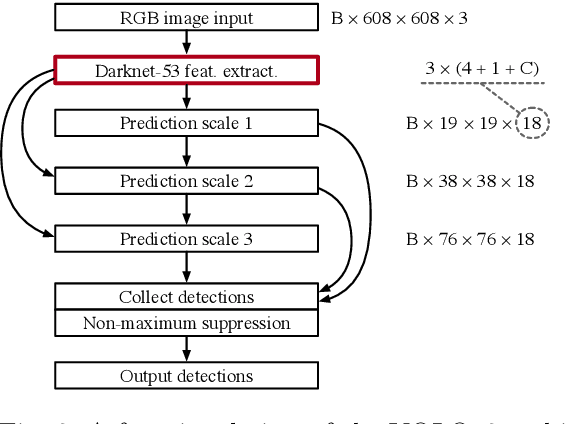

Abstract:A wide range of applications in marine ecology extensively uses underwater cameras. Still, to efficiently process the vast amount of data generated, we need to develop tools that can automatically detect and recognize species captured on film. Classifying fish species from videos and images in natural environments can be challenging because of noise and variation in illumination and the surrounding habitat. In this paper, we propose a two-step deep learning approach for the detection and classification of temperate fishes without pre-filtering. The first step is to detect each single fish in an image, independent of species and sex. For this purpose, we employ the You Only Look Once (YOLO) object detection technique. In the second step, we adopt a Convolutional Neural Network (CNN) with the Squeeze-and-Excitation (SE) architecture for classifying each fish in the image without pre-filtering. We apply transfer learning to overcome the limited training samples of temperate fishes and to improve the accuracy of the classification. This is done by training the object detection model with ImageNet and the fish classifier via a public dataset (Fish4Knowledge), whereupon both the object detection and classifier are updated with temperate fishes of interest. The weights obtained from pre-training are applied to post-training as a priori. Our solution achieves the state-of-the-art accuracy of 99.27\% on the pre-training. The percentage values for accuracy on the post-training are good; 83.68\% and 87.74\% with and without image augmentation, respectively, indicating that the solution is viable with a more extensive dataset.
Biometric Fish Classification of Temperate Species Using Convolutional Neural Network with Squeeze-and-Excitation
Apr 04, 2019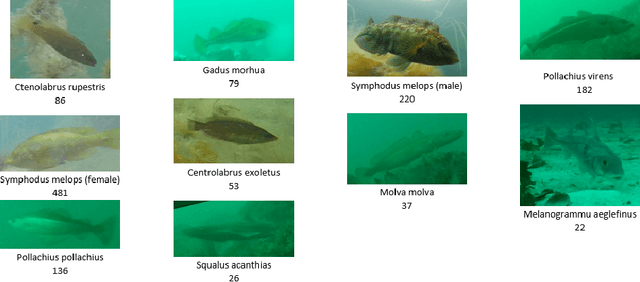

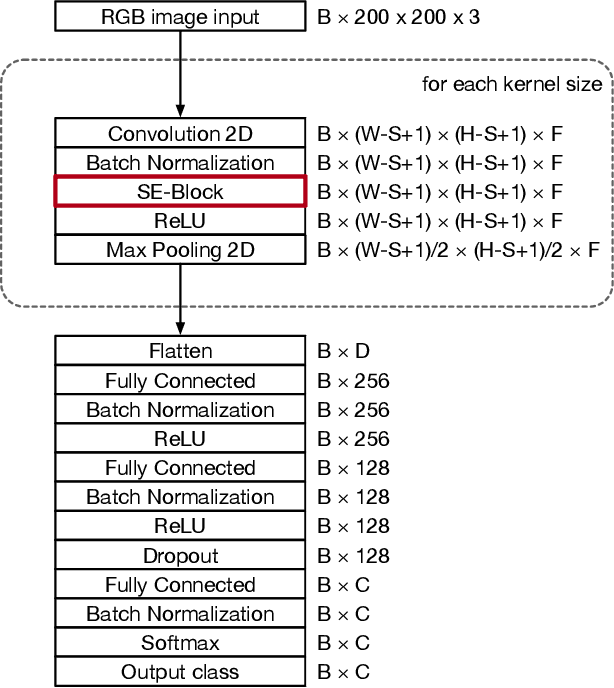

Abstract:Our understanding and ability to effectively monitor and manage coastal ecosystems are severely limited by observation methods. Automatic recognition of species in natural environment is a promising tool which would revolutionize video and image analysis for a wide range of applications in marine ecology. However, classifying fish from images captured by underwater cameras is in general very challenging due to noise and illumination variations in water. Previous classification methods in the literature relies on filtering the images to separate the fish from the background or sharpening the images by removing background noise. This pre-filtering process may negatively impact the classification accuracy. In this work, we propose a Convolutional Neural Network (CNN) using the Squeeze-and-Excitation (SE) architecture for classifying images of fish without pre-filtering. Different from conventional schemes, this scheme is divided into two steps. The first step is to train the fish classifier via a public data set, i.e., Fish4Knowledge, without using image augmentation, named as pre-training. The second step is to train the classifier based on a new data set consisting of species that we are interested in for classification, named as post-training. The weights obtained from pre-training are applied to post-training as a priori. This is also known as transfer learning. Our solution achieves the state-of-the-art accuracy of 99.27% accuracy on the pre-training. The accuracy on the post-training is 83.68%. Experiments on the post-training with image augmentation yields an accuracy of 87.74%, indicating that the solution is viable with a larger data set.
 Add to Chrome
Add to Chrome Add to Firefox
Add to Firefox Add to Edge
Add to Edge